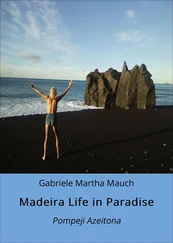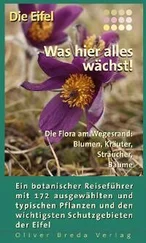Batwing Coral Tree
Erythrina speciosa
Bloom time
From January to April.
Characteristics
The tree grows up to 5 m (5,5 yd.) tall. The heart-shaped leaves are shed off in win-ter. Blossoms sprout of the bare tree. The conical inflo-rescences are placed at the shoot tips; mostly in little groups on short sprigs. The intense red single blooms have crescent-like ends that rigidly stick out sideways.
Site:
On Madeira you will find the Batwing Coral Tree as an ornamental plant in parks and gardens. It prefers sites in the sunny south-ern part of the island up to an altitude of 300 m (330 yd.). For example there are sev-eral specimens situated in the Parque Santa Catarina ( 198), Funchal. You can also find the tree growing in Machico and in Ribeira Brava.
Interesting to know:
The Batwing Coral Tree is native to South Brazil. The Abyssinian Coral Tree/Red-Hot Poker Tree (Erythrina abyssinica) is a related species in-digenous to Central and East Africa with brush-shaped flowers. The lobes of the single blossom are narrower and thread-shaped. This species can also be found on Madeira. The seeds of most Coral Tree species are toxic. The seeds of Abyssinian Coral Tree contain a narcotic agent that has a similar effect to curare. It could cause paralysis or even death for human beings.
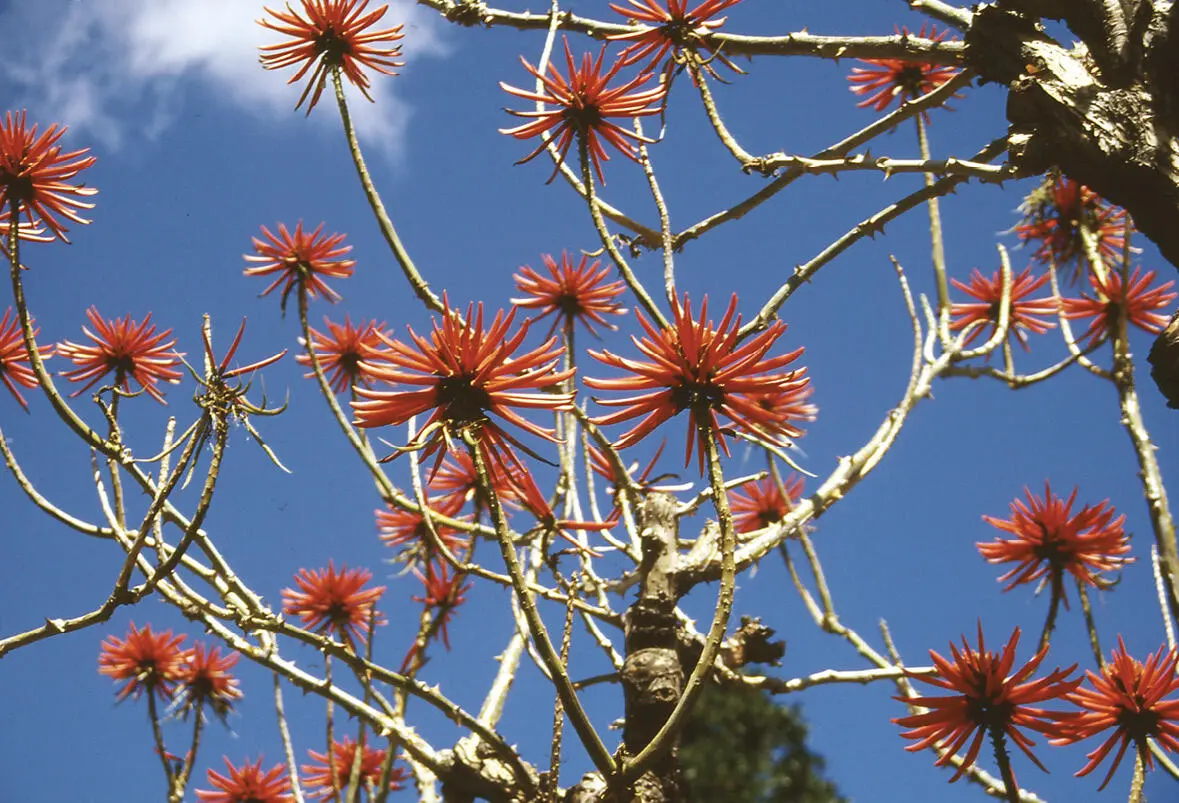
26


In the Gardens
Cock’s Comb Coral Tree
Erythrina crista-galli
Bloom Time
From March to September.
Characteristics
It can grow up to 5 m (6,5 yd.) tall but often stays shrub-shaped. The leathery leaves are roughly pinnate and partly thorny. You can easily distinguish between the Cock’s Comb Coral Tree and other Coral Tree spe-cies represented on Madeira by its blossoms that resem-ble the comb of a rooster.
Site:
In the south of the island you will find spec-imen trees in parks and gardens up to an altitude of 300 m (330 yd.). A remarkably giant specimen grows in front of the church on the main square of Caniço. Occasionally you may also encounter this attractive plant in Funchal.
Interesting to know:
The tree originates from tropical regions in South America (South Brazil, Paraguay, Uru-guay, North Argentina) where it is pollinated by hummingbirds that are drawn by the con-spicuous red blossoms. To attract birds the plant produces particularly much nectar that often drips from the blossoms. Thus the tree is also called “Cry-Baby”. The plant tolerates low frost. Although it uses to freeze back there, it can even be cultivated outdoors in Southern England. Being quite hardy and undemand-ing you may often find it being cultivated in unheated greenhouses of botanical gardens.
27
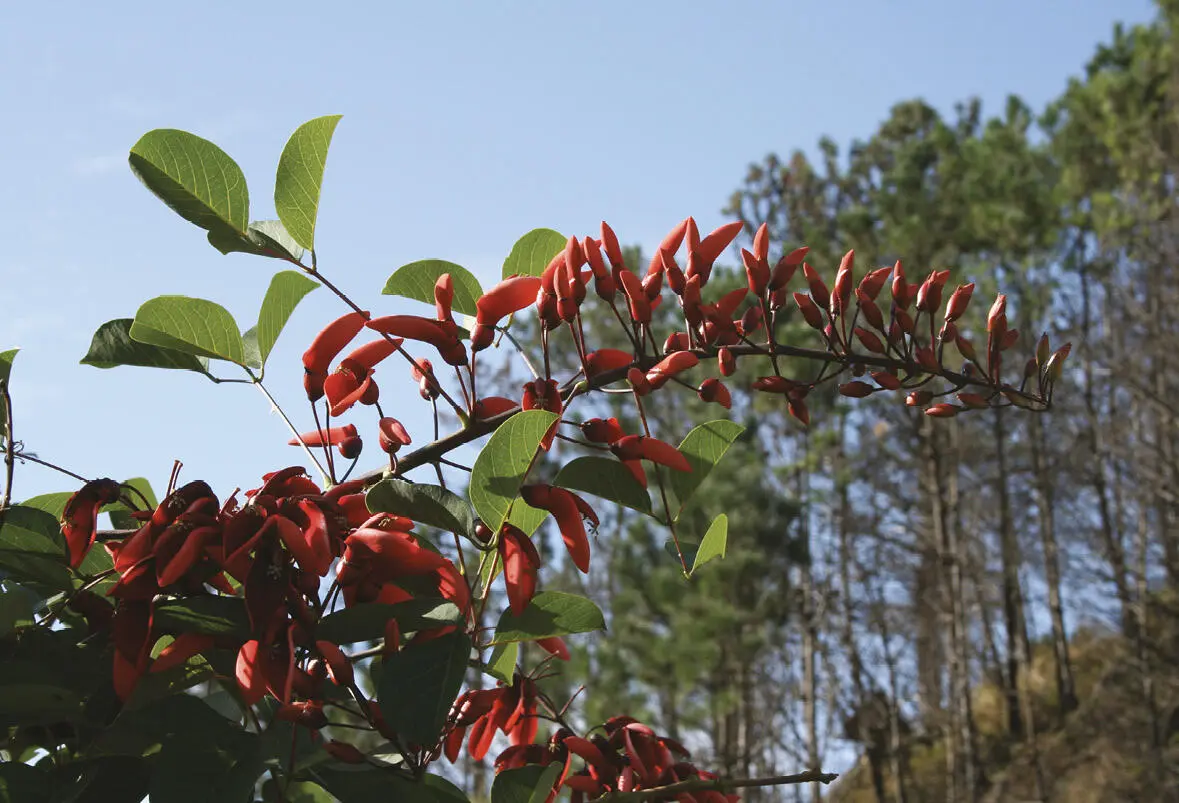


In the Gardens
Judas Tree
Cercis siliquastrum
Bloom time
From March to May.
Characteristics
The little tree grows up to 5 m (5,5 yd.) tall and sheds off its rounded leaves in win-ter. The magenta blossoms remind of those of papilion-aceous plants. They appear before the leaves emerge and are situated in short racemes directly on the twigs (stem-flowering or cauliflo-ry), often lining them entirely.
Site:
On Madeira you will probably not find the Judas Tree very frequently. It prefers quite chilly and foggy sites at an altitude of 300-600 m (330-655 yd.) where it grows in sever-al parks, e.g. in the Palheiro Gardens ( 191).
Interesting to know:
The tree is native to the bush lands of the eastern Mediterranean regions and the Near East. Its name is derived from “Judaea tree”, denomination that refers to its geographical origin. The legend tells us that Judas Iscariot hung himself on a tree of this species after realizing the consequences he had caused by betraying Christ. The plant’s blossoms are sup-posed to symbolize his blood. Its flat seeds are representing the coins that Judas received by the authorities as the reward for his treason.
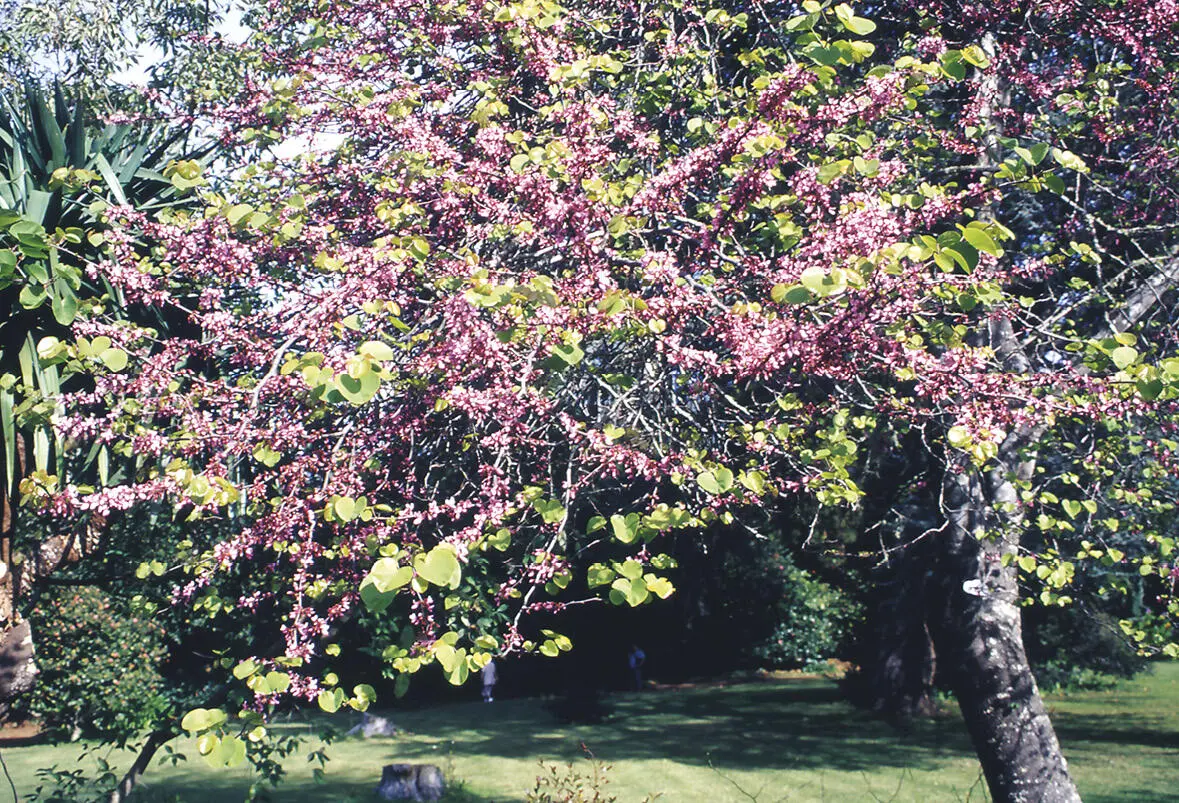
28


In the Gardens
Cape Chestnut Tree
Calodendrum capense
Bloom time
From May to July.
Characteristics
The tree reaches a height of 7-15 m (7,5-16,5 yd.) and has a smooth trunk with many branches and a broad canopy. The leaves are up to 20 cm (8‘‘) long and remind of Sweet Chestnut Trees but appear separately. The conical inflo-rescences are pink and consist of numerous blooms which each have five narrow petals.
Site:
The Cape Chestnut Tree does not appear very frequently on Madeira. Occasionally you may find it in several parks and gardens, most-ly in the municipal area of Funchal or for example in the Palheiro Gardens ( 191).
Interesting to know:
The Cape Chestnut Tree originates from re-gions that are close to the South African coast. It was introduced as an ornamental plant in many tropical and subtropical countries for its attractive blossoms. The plant is a member of the Rue family (Rutaceae) and thus is not closely related to the Sweet Chestnut Tree, which belongs to the Beech family (Fagaceae). Horse Chestnut Trees make up another family. Rutaceae are nearly exclusively found in warm-er zones of the earth. Both leaves and fruits contain ethereal oils. Oranges and lemons are popular representatives of the Rue family.
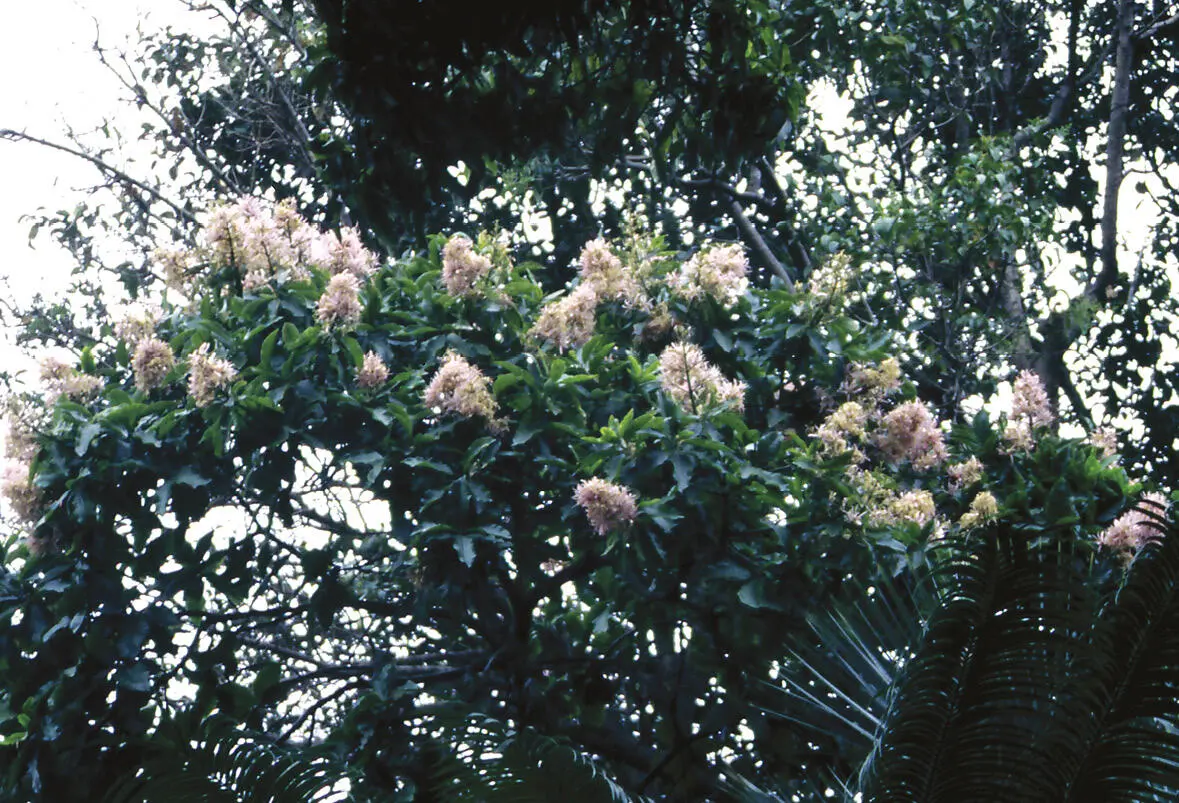
29


In the Gardens
Peruvian Pepper Tree
Schinus molle
Bloom time
From October to Febru-ary; fruit bearing from May onwards.
Characteristics
The tree grows up to 8 m (9 yd.) tall. With its pendulous twigs it reminds of a Weep-ing Willow. If you crumble the pinnate, likewise pen-dulous leaves they smell intensively of pepper. Green berries that become pink at maturity develop from the whitish, inconspicuous flow-ers organized in panicles.
Читать дальше














